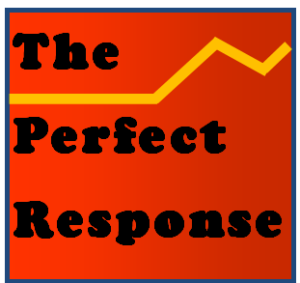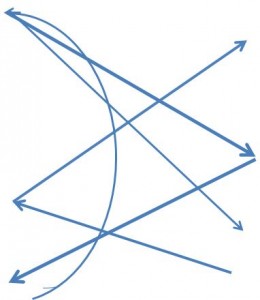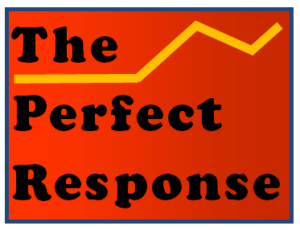After decades on the planet, I’ve come to think of the idea of causality in human affairs as problematic.
The idea of causality is such a comfortable mental device. It frequently allows us to take the mystery out of an action by labeling a plausible cause. Early in my career I had a brazen certainty that Action X will produce Result Y. But especially in the realms of human conduct and attitudes, we are still a long way from claiming accurate causal chains. “Serendipity” is not a term one is likely to hear very much from social scientists who seek explanations for conduct in so many forms of human affairs. Too bad, because we need to allow uncertainty to have its place. We are maybe on slightly firmer ground to talk about one individual’s influences. But just when that road seems promising, we encounter persons with responses that have boomeranged far away from predicted linkages to parents, mentors, influencers and friends. None may work out as particularly good predictors.
There are about 100 billion neurons in the brain, creating an incalculable number of neural pathways that might be activated to produce certain actions or attitudes. Some of those neural highways could be activated by heredity or the chemistry of the body. Others probably arise from the ineffable forces of individual experience accumulated over time. But many are far too obscure to be measured with the relatively crude tools of psychology, neural imaging, or the discovery of predictive antecedents. Even what seems like a simple and straightforward persuasive message may not produce attitudes we would expect.
![]() One study trying to get teens to lower the volume coming into their earbuds thought another teen explaining the risks might be a good source. Not so. That particular study showed the boomerang of a slight increase in their post-message listening levels. Go figure.
One study trying to get teens to lower the volume coming into their earbuds thought another teen explaining the risks might be a good source. Not so. That particular study showed the boomerang of a slight increase in their post-message listening levels. Go figure.
All of us who teach and write about persuasion should be a bit embarrassed to be so clueless. After all, rhetorical strategies are predicated on the idea that if an individual takes a certain verbal approach to an audience, it should yield more or less predictable results. Like most realms of theory, there is the implicit promise of finding an “if-then” sequence. Call a person a “jerk” and they will not react well. Even so, I am constantly surprised by the unpredictability of audiences. Even in our text on the subject, for the sake of clarity we more or less settled disputes about causal factors that are–in truth–not quite so neatly resolved.
Every new case of a mass shooter or some other form of human depravity leaves me scratching my head and scoffing at the journalists who want to identify specific causes now. How could a new mother abandon her four-year old to die in an alley? What was mass murderer John Wayne Gacy thinking? What could explain how a professional clown who was hired out to do children’s parties could turn into such a monster?
It is possible to build causality claims using the laws of physics or chemistry, but human nature is far less predictable.
![]() It’s the rare “expert” who says, “I don’t know.” We have a natural compulsion to sort out the motives of others. It is one of the narrative lines that must be filled in when we parse human behavior. Try out a few random movements around your friends and watch the wheels start to turn as they try to figure out what’s up with you. Wanting to know the causes of everything is natural instinct. And we clearly know a lot about the chemical and biological causes of many conditions and diseases. But assigning motives to a human can be a fool’s errand. What Hollywood usually wraps up by the time the credits roll remains largely unwrapped by the police professionals left to sort out real mayhem. In the study of crime, knowing who did some action is easier than knowing why.
It’s the rare “expert” who says, “I don’t know.” We have a natural compulsion to sort out the motives of others. It is one of the narrative lines that must be filled in when we parse human behavior. Try out a few random movements around your friends and watch the wheels start to turn as they try to figure out what’s up with you. Wanting to know the causes of everything is natural instinct. And we clearly know a lot about the chemical and biological causes of many conditions and diseases. But assigning motives to a human can be a fool’s errand. What Hollywood usually wraps up by the time the credits roll remains largely unwrapped by the police professionals left to sort out real mayhem. In the study of crime, knowing who did some action is easier than knowing why.
After recent demonstrations at Columbia University, New York’s Deputy Police Commissioner Kaz Daughtry held up a book on terrorism at a press conference and said, “there’s somebody. . . [who is] radicalizing our students.” He surely had causes in mind. But that rhetorical flourish doesn’t stand up very well. What person would have that kind of power? And are the protesters so uniform as to be influenced by the same persons or groups? It is more likely that many students have absorbed news of Palestinians living in what some have called “the open-air prison of Gaza,” mustering youthful outrage for the status quo. And even that simple causality chain could be suspect.
 Thankfully, not every case is so difficult. Apple recently ran an advertisement selling a new tablet. You may have seen the ad where a room full of creative tools–a piano, a guitar, paints, a record player, books, a trumpet–are slowly crushed in real time by a giant industrial press, leaving a tableau of shards and ruin. The tag line suggested that all of these wonderful tools are not needed if you have an Apple tablet. Only in advertising can a person be so cluelessly reductionist. Within hours media and arts creators of all sorts reacted with horror at the idea that this is what the company thought of their tools. Actor Hugh Grant called it “The destruction of the human experience. Courtesy of Silicon Valley.” The revulsion was real, and clearly not what Apple’s marketing geniuses predicted.
Thankfully, not every case is so difficult. Apple recently ran an advertisement selling a new tablet. You may have seen the ad where a room full of creative tools–a piano, a guitar, paints, a record player, books, a trumpet–are slowly crushed in real time by a giant industrial press, leaving a tableau of shards and ruin. The tag line suggested that all of these wonderful tools are not needed if you have an Apple tablet. Only in advertising can a person be so cluelessly reductionist. Within hours media and arts creators of all sorts reacted with horror at the idea that this is what the company thought of their tools. Actor Hugh Grant called it “The destruction of the human experience. Courtesy of Silicon Valley.” The revulsion was real, and clearly not what Apple’s marketing geniuses predicted.
![]()





